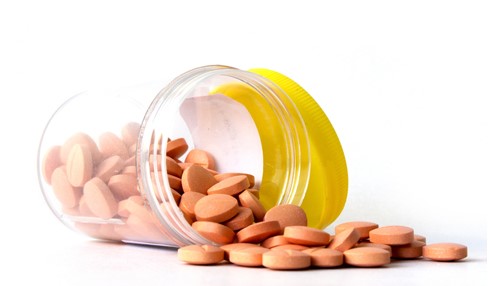
An ambulance was called to a suicide attempt of a 48-year-old woman with a history of depression and hypertension.
The patient was found fully conscious, well oriented to the time and place; other vital signs were normal. She reported reckless swallowing of following drugs approximately 30 minutes ago: 50 tablets of 100 mg opipramol (tricyclic antidepressant), bisoprolol 125 mg and an unspecified amount of amlodipine + valsartan + hydrochlorothiazide + atorvastatin.
A peripheral venous catheter was inserted. During transport to the hospital (20 minutes), progressing somnolence developed and blood pressure dropped. The patient was admitted directly to the ICU.
At the admission, the patient was drowsy (GCS 11 = 3-3-5) with hypotension 80/50 mmHg, sinus bradycardia 55 bpm, respiratory rate was 14 breaths per minute and SpO2 95% without supplemental oxygen.
A second peripheral venous catheter was inserted. Noradrenalin 5 mg in 50 ml of 5% glucose was administered to the peripheral venous catheter as an infusion – without any effect on blood pressure. The bolus of atropine 2 x 0.5 mg was administered. Central venous catheter (CVC) and arterial cannula were inserted (both performed with the help of sononavigation). Noradrenaline 2mg/h was started via CVC, without any effect on BP, followed by a further drop in BP to 67/40 mmHg, heart rate to 55 bpm and GCS to 8. The bolus of adrenalin (1 mg in 100 ml of normal saline, 2 ml bolus i.v.) was given, and BP raised to 100/60 mmHg and heart rate to 90 bpm. General anaesthesia was started with sufentanil 20 ug + propofol 100 mg + succinylcholinjodide 100 mg i.v.. The trachea was intubated, and mandatory ventilation was set to hyperventilate the patient (alkalization of pH).
Three ampules of calcium gluconate (antagonization of calcium channel blocker ) and 100 ml of 8.4 % sodium bicarbonate (aim to alkalize blood pH because of intoxication with a tricyclic antidepressant) were administered i.v. , a nasogastric tube was placed, and 75 mg of activated carbon 4xq4h and once 500 ml of macrogol were administrated. Analgosedation was maintained by sufentanil 20ug/h and propofol 80mg/h to tolerate endotracheal tube and mechanical ventilation. 2×500 ml of balanced crystalloid solution were given intravenously, and after that, the BP has stabilised at 80/40 mmHg while administering 4 mg of noradrenaline/h, adrenaline 5 mg/h and vasopressin 3 IU/h continually. Isovolumic CVVHD (= continuous veno-venous hemodialysis) with citrate anticoagulation was started with initial dialysate flow of 4000 ml/h (the maximum of the machine). The ratio of blood flow to dialysate was modified to prefer higher blood: dialysate flow ratio to induce alkalization (to reach a higher citrate input).
We found an elevation of lactate (11 mmol/l) and Base Excess of -5 mmol/l in POCT (= point of care testing) and clinically reduced peripheral perfusion (capillary refill time of more than 5s). The pH was maintained after the administration of sodium bicarbonate at 7.45. All other lab results, including admission lab tests, were normal.
The clinical question was at this moment, whether it is necessary to administer fluids, to increase the dose of inotropes or vasoconstrictors or even to give some vasodilators?
Echocardiography was performed to assess pathophysiology of the shock (intoxication with beta-blocker, tricyclic antidepressant, vasodilators):
